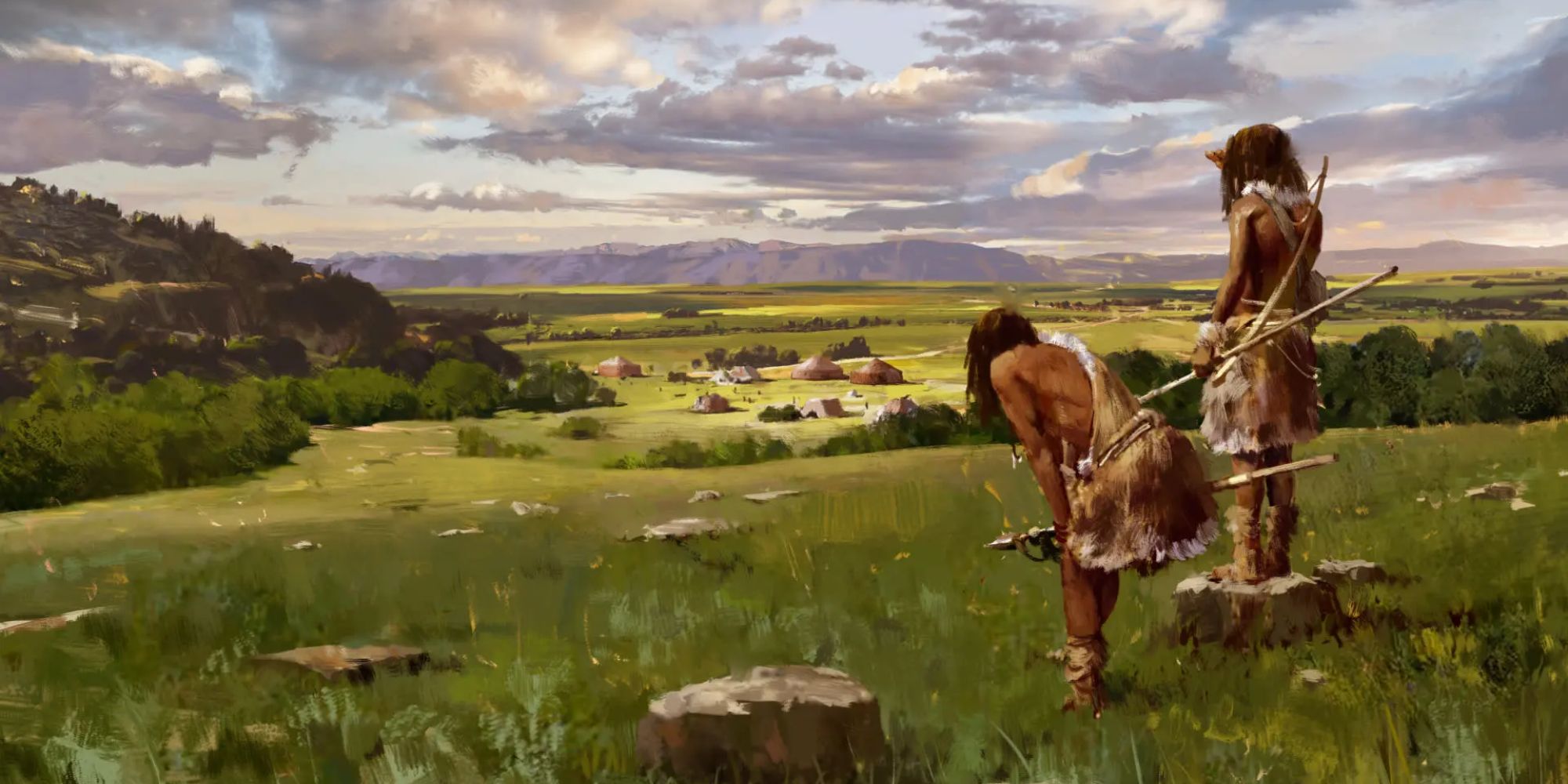
As with most strategy games, laying a strong foundation in the early game is critical to your success in Millennia. From the very first turn, the best way to get ahead of the competition is by making smart decisions when it comes to spending your limited, hard-won resources.
RelatedThe Best Historical Strategy Games By Era
Do you have a favorite period in history? Try these strategy games to recreate or change humankind's major conflicts!
PostsThe Age of Stone might not last very long, but it's one of the most important periods in the game. Read on to find our best build order for these first few turns, and you'll have a fledgling empire destined for greatness.
1 Research Scouting
Exploration Is Vital
The very first thing you do in each campaign should be set your research to Scouting. It should take five or six turns, and when it is completed you'll get a free Scout Cavalry. You can then send this fast unit to explore the area around your Homeland, making note of barbarian tribes, collecting resources from Remote Camps, and possibly discovering Landmarks.
While the research is in progress, have your starting Warbands patrol easily-accessible areas such as Scrubland and Grassland around your village. This will give you an idea of where to send the Scout first when they're ready to ride out.
2 Build A Town Center
You Need Government XP To Expand
Next, you'll need to choose a building for your village to produce. The best choice is the Town Center, which will effectively double your production of Government XP. This, in turn, will speed acquisition of Tribal reforms and Settlers.
3 Research Workers
How Else Are You Going To Build An Empire?
Scouting should finish before the Town Center, which means your next decision will be another technology. Choose Workers, since finishing it will give you access to Clay Pits and give you extra Improvement Points, all but guaranteeing that you can build one right away.
This technology also provides access to the Levy Workers project, which isn't important now but will be extremely useful in the mid-game since it lets a Region convert Production into Improvement Points.
4 Choose Local Reforms
A Temporary But Powerful Boost
Sometime around Turn 10 or so, you should get your first Culture Bonus. Your options are limited, but the best one at this stage is Local Reforms, targeting your Homeland. This increases the Regional Efficiency for five turns, speeding up the construction of your Town Center.
It might be tempting to create a Town or finish your current research with Eureka if it's available, but you don't need either of those things just yet. Towns will come later, and at this stage Eureka will only save about two turns.
5 Recruit Another Scout Cavalry
Keep Exploring
It's good practice to have multiple Scouts exploring in different directions; the more you know, the better you can plan! Once the Town Center is finished, spend a few turns to get another Scout Cavalry into the field and start uncovering territory that your first one hasn't seen yet.
You might be able to recruit a Scout Cavalry from a Remote Camp instead. If that happens, you can skip straight to the Dolmen, or recruit a third Scout to make sure no stone is left unturned.
6 Build A Clay Pit
Speed Up Construction
As soon as Workers is finished, build a Clay Pit on a Grassland tile. This will provide an extra Improvement Point each turn, as well as some additional Production for the Homeland. With the extra Improvement Point, you'll be able to build Foresters, Hunting Camps, and Fishing Boats much more easily as time progresses.
In the rare scenario where there are no Grasslands within reach, a good alternative is to build a Forester in the nearby woods. It doesn't provide any Improvement Points, but it offers more Production and the wood can be turned into some useful resources - namely paper - later in the game.
7 Research Defenses
Be Prepared For Anything
Even if there aren't any immediate threats nearby, Defenses is a Stone Age technology that is sure to save your bacon at some point. It adds an additional Militia to all Towns and Capitals, making it much less likely that a roving barbarian or a surprise attack from a neighbor will succeed.
Related7 Best Strategy Games With No Combat
Get your brain going without the need for violence.
PostsDefenses also lets you start training Archers and even gives you a free one. When you start on research for Defenses, start moving your Warbands back to the Homeland. They can then merge into a single army with the Archer and start clearing nearby barbarian outposts.
8 Build A Dolmen
The next thing to build in your Homeland is a Dolmen, which will increase the Regional Influence and cause your borders to expand. More tiles means more options when it comes to building Improvements, and you'll need the extra space once your population starts to grow.
9 Build A Town
When your second Culture Bonus comes in, use it to create a Town just outside your borders. The best placement will vary by your start location, but it's always best to build a Town next to at least three hills, forests, coasts, or farmable resources.
The Town will quickly push your borders outward, claiming the nearby tiles (though it's worth noting that the process will be slower on hills and forests). It will also start generating Wealth once you have an Improvement near it.
10 Recruit A Settler
Throughout the whole process, the best strategy is to save your Government XP until you have the 30 required to recruit your first Settler.
If you get some extra from a Remote Camp or from destroying a barbarian outpost, you might also be able to afford the Tribal Farming reform, which increases Food production in the Homeland.
Recall a Scout Cavalry to your village to escort the Settler, then send them to the spot you'd like to place your second city. The earlier you can get this done, the sooner you'll be able to Integrate your new Region and start building a proper empire!













